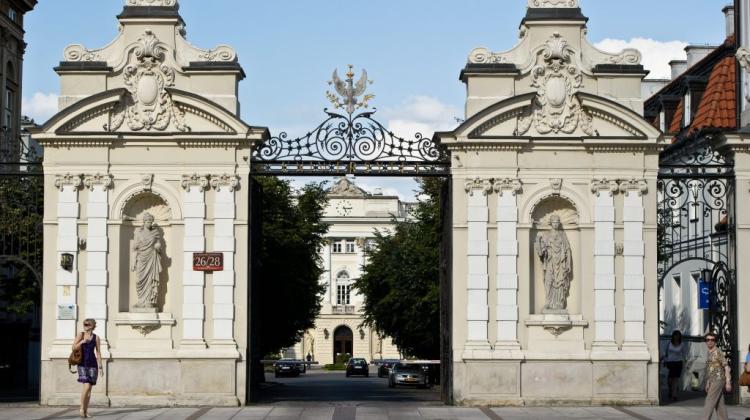3D documentation of a famous church in Trzęsacz
3D documentation of the famous ruins of the St. Nicholas Church on the Baltic See in Trzęsacz (West Pomerania) has been prepared by archaeologists from the University of Warsaw.
"This is the first scientific documentation of the unique monument" - told PAP Martyna Sałek of the Communal Cultural Centre in Rewal, holding the substantive care of the church. "Thanks to this - if anything would happen to the structure - there will be a scientific trace, which will remain after it for posterity" - she added.
Until now no scientific work has been conducted at the monument - neither architectural or archaeological analysis of the site.
"In addition to detailed plans and inventory of damage to the wall, we took a number of panoramic images, which the commune can use for the promotion of the object" - told PAP head of the laboratory of 3D scanners at the Institute of Archaeology of the University of Warsaw, Marta Bura.
The last disaster within the church occurred in 1994 - the sea took another piece of the wall. Then it was decided to professionally secure the cliff, which to this day provides effective protection of the archaeological site.
Martyna Sałek explained that the Commune of Rewal intends to hydrophobise the wall of the ruin - that is, protect the bricks against collapse as a result of salinity. Due to the fact that it is a costly process, external funds will be sought for this purpose.
"Detailed documentation of the object is required in many competitions - which is why the 3D scans can contribute to saving the monument" - she added.
Ruins of the St. Nicholas Church in Trzęsacz are currently on the Baltic Sea, on a cliff. In the Middle Ages the church was located in the centre of the village, almost 2 km from the shore. With time, the Baltic See took more and more land.
In 1750, the distance between the sea and the monument was 50 meters, and in 1806 - only 15 m. In 1874 in the church celebrated last service and the building was closed, as it threatened to collapse. In 1900 there were first, small collapses, and in 1901 the entire north wall collapsed. Over the next years, the sea slowly swallowed the church. Last collapse occurred in 1994, when half of the south wall collapsed. Since then, 12 meters long wall stands on a steep cliff and effectively withstands the destructive weather conditions.
PAP - Science and Scholarship in Poland
szz/ mrt/
tr. RL
Przed dodaniem komentarza prosimy o zapoznanie z Regulaminem forum serwisu Nauka w Polsce.


















